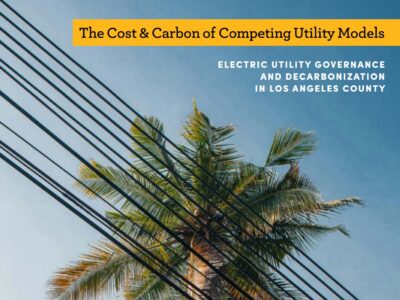Lighting Candles in Dark Times: Environmental Law Centers in the Trump Era
These law school centers show it’s possible find ways to make a difference.
Environmental laws have become vibrant parts of the law and policy ecosystem. At a time when despondency seems all too common, the work of these law school centers offers beacons of hope for the future of environmental protection. Some of that work is playing defense — pushing back against deregulatory efforts — while other work plays offense by identifying innovative directions for environmental policy.
A comprehensive survey isn’t practical, but I’ll provide examples from several different centers. I apologize that I can’t cover all the environmental law centers that do great work, but here are some samples of recent activities from a half-dozen law schools. If I’ve left out your environmental center, email me about current activities and I’ll be glad to add something.
Berkeley’s Center on Law, Energy, and the Environment has issued a dozen reports so far this year covering a wide range of topics, often straight to the desks of state policymakers. The subjects include innovative investment models for climate infrastructure, reducing carbon emissions from aviation, using satellites to identify methane sources, fire recovery in Los Angeles, and sustainable battery supply chains.
At Columbia, the Sabin Center’s Renewable Energy Legal Defense Initiative (RELDI) assists in providing pro bono legal representation to residents, community groups, and public interest organizations who support bringing utility-scale and community-scale wind and solar projects to their communities. Sabin also has a widely used tracker for climate-related litigation around the world.
The Georgetown Climate Center recently issued a report on innovative climate adaptation programs in cities like Boston, San Diego, Cleveland, Seattle, Savannah and Tampa. Each of the examples demonstrates how equitable programs can foster accountability, build relationships with communities, and center communities in decision-making.
Harvard’s Environment and Energy Law Program issued a report analyzing legality of the Trump Administration’s proposal to eliminate carbon emission regulations for power plants. Another report analyzes how the Trump Administration has weakened arguments that courts should defer to expert agencies by politicizing agencies and undermining agency expertise.
NYU’s Center for Policy Integrity released an issue brief rebutting the Trump Administration’s claim that U.S. vehicles do not contribute “significantly” to climate change. Based on a review of the evidence, the report concludes that “the U.S. vehicle sector is the highest source of transportation emissions globally—in fact, over the last fifty years, U.S. vehicles have emitted more greenhouse gases than the vehicles in the next nine highest-emitting countries combined.”
At UCLA, an all-day symposium organized by the Emmett Institute explored a range of creative approaches available to cities, counties, and states to cut pollution from cars, trucks, and other transportation sources given threats to tailpipe emission standards. The symposium also examined ways to ensure that the transition to cleaner vehicles benefits disadvantaged communities.
Each of these centers is involved in a host of other activities, and there is important work being done by centers at other schools. No one thinks that these centers are going to single-handedly save the planet. But they show how, even in dark times, it’s possible to find ways to make a difference.





Thanks for this Dan; it is very important to focus on the good that is being done. I support, but am not member, of the Southern Environmental Law Center, which does a lot of good work in the southeast US, see https://www.selc.org/our-impact/